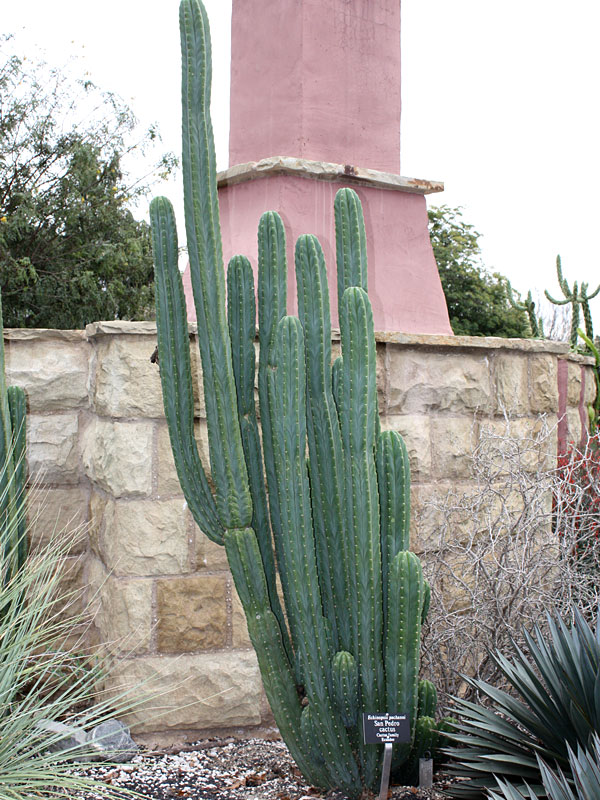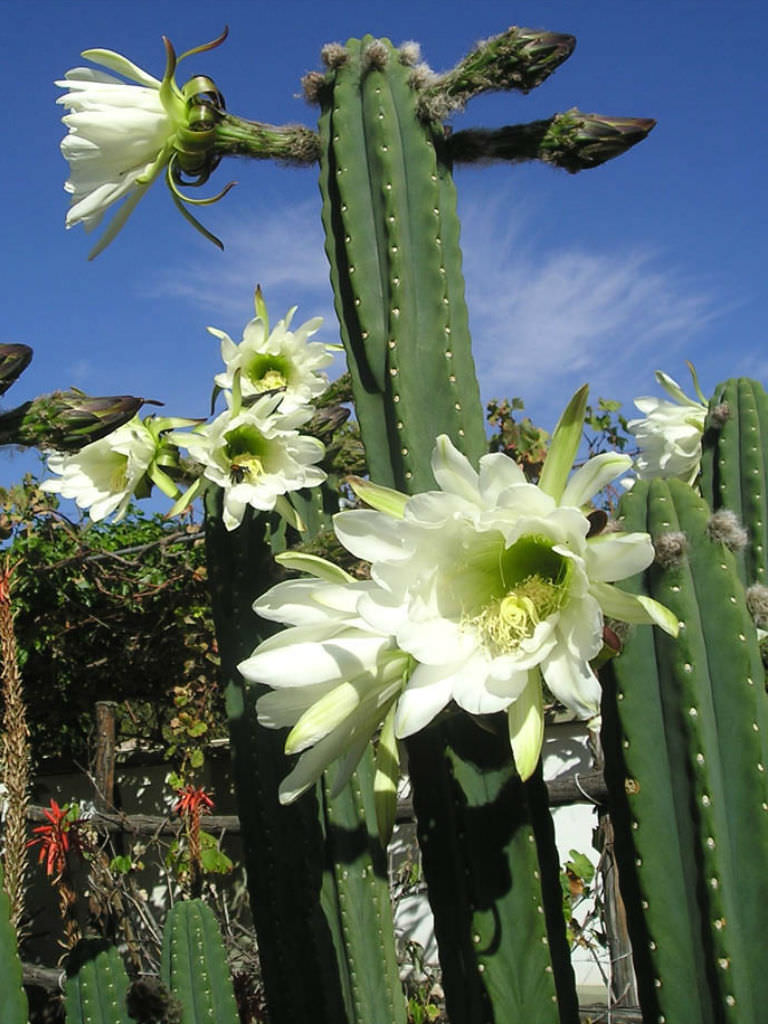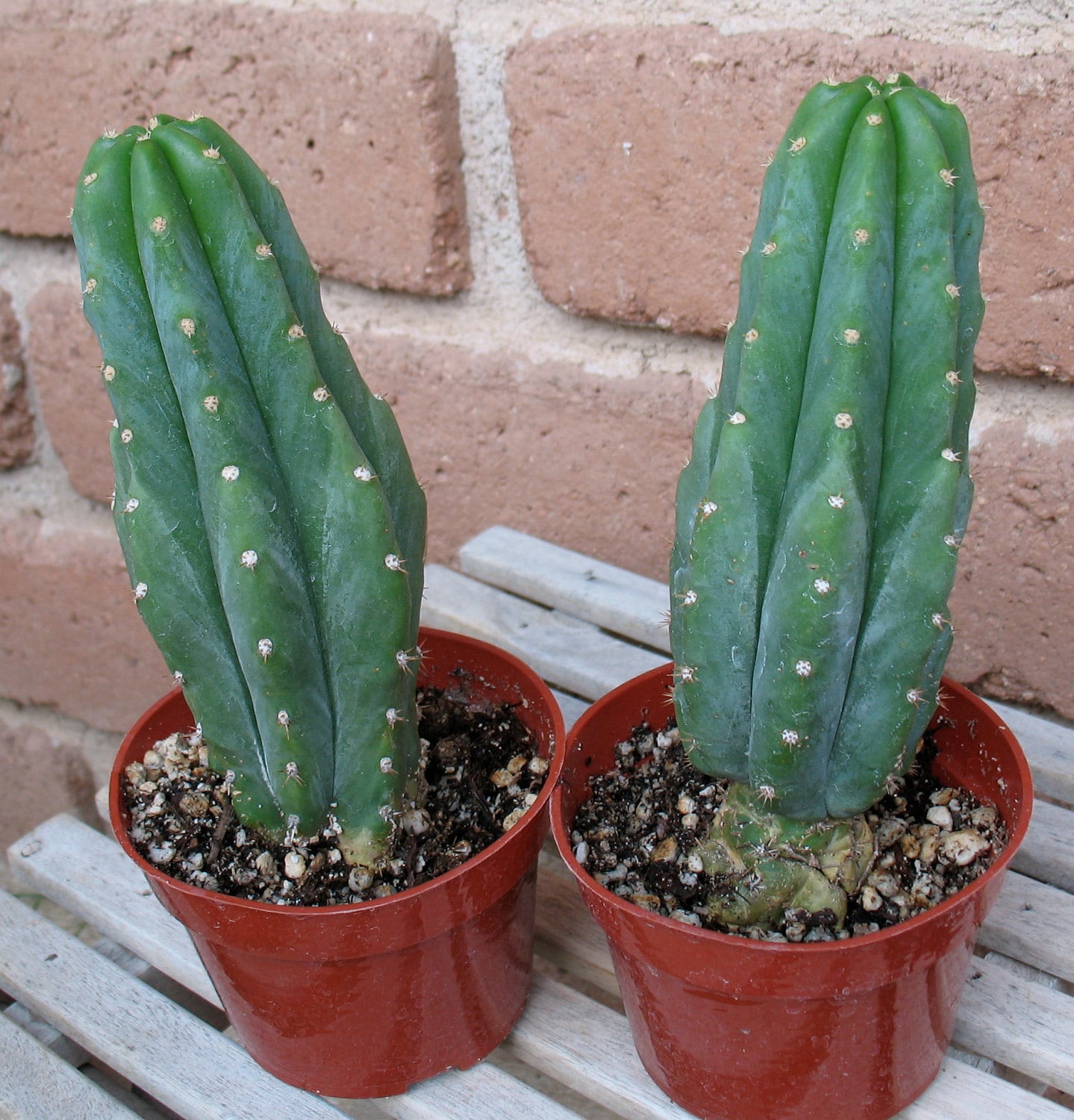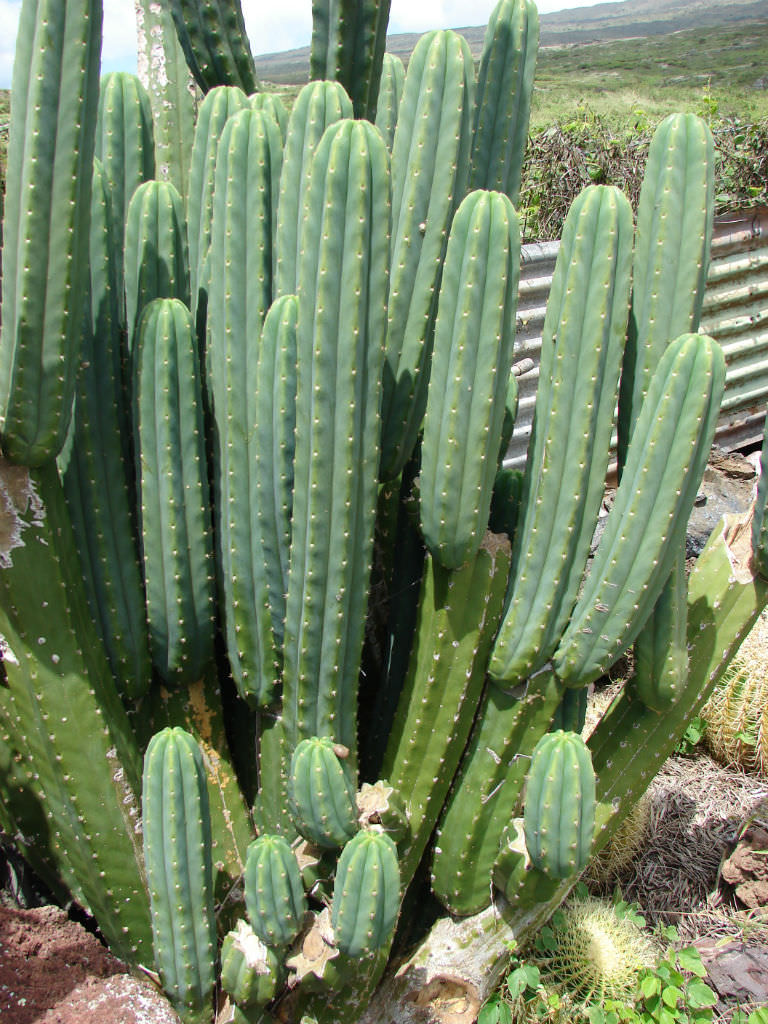
Trichocereus Pachanoi f. Cristata Crested San Pedro Cactus Cactus Kingdom
Botanical Name: Trichocereus pachanoi, now known as Echinopsis pachanoi Common Name: San Pedro Cactus Family: Cactaceae Plant Type: Succulent/Cactus Hardiness Zones: 8 - 10 (USDA) Sun Exposure: Full sun Soil Type: Well-drained soil Soil pH: Slightly acidic to neutral Maturity: 10-15 years Bloom Time: Nighttime, summer to early autumn
San Pedro Cactuses Trichocereus pachanoi "Claude"
Echinopsis Pachanoi, also known as the San Pedro cactus is native to Peru, Ecuador, Argentina, Chile, and Bolivia and it thrives at high altitudes, in the Andes Mountains. It can be grown outdoors in USDA Hardiness Zones 8b to 10b as it doesn't mind cooler temperatures as long as they don't drop below 15°F (-9°C).

San Pedro Cactus (trichocereus pachanoi) Urban Xeriscape
The mescaline-containing San Pedro cactus - Trichocereus pachanoi. The San Pedro cactus, also known as Trichocereus pachanoi or torch cactus, is a columnar cactus from South America, named and described by Britton & Rose. Also known as huachuma, it is one of many mescaline-containing cacti found throughout the Andes Mountains of Peru, Colombia, Ecuador, Bolivia, Argentina, and Chile.

Echinopsis pachanoi (San Pedro Cactus) World of Succulents
This robust plant is fast growing, easy to maintain, propagate and grow in your home potted, or in the ground. This variety of trichocereus cactus has very small spines a frost tolerance to the high 20's a high tendency to offset and form branches.

San Pedro Cactus_ Echinopsis Pachanoi Photograph by Rick Hirschl Pixels
In the following sections, we'll break down the characteristics of five most common San Pedro cactus types: Trichocereus pachanoi (San Pedro Cactus), Trichocereus peruvianus (Peruvian Torch Cactus), Trichocereus bridgesii (Bolivian Torch Cactus), Trichocereus scopulicola (Scopulicola Cactus), and Trichocereus terscheckii (Argentine Saguaro Cactus).

San Pedro Cactus seeds, Trichocereus pachanoi, 2 sizes
Common names. San Pedro cactus. Constituents. Active constituents. Mescaline, Tyramine, ect. Echinopsis pachanoi (also known as Trichocereus pachanoi or San Pedro cactus) is a fast-growing columnar cactus native to Argentina, Bolivia, Chile, Ecuador and Peru. [citation needed] It contains mescaline and other psychoactive alkaloids.

Trichocereus Pachanoi f. Cristata Crested San Pedro Cactus Cactus Kingdom
Fast-growing, Trichocereus pachanoi (San Pedro Cactus) is a large, multi-stemmed columnar cactus forming a small tree adorned with several branches. Up to 6 in. wide (15 cm), each columnar stem is pale green to blue-green when young, changing to dark green with age. They feature 4-8 rounded ribs with white areoles and few spines.

Trichocereus Pachanoi f. Cristata Crested San Pedro Cactus
San Pedro Cactus Plant (Trichocereus Pachanoi or Echinopsis Pachanoi) Anytime you walk into your nearby gardening retail store, you'll probably find this plant labeled as Trichocereus pachanoi, Cereus pachanoi or Echinopsis peruviana (Peruvian torch cactus),but its scientific name is Echinopsis pachanoi (Spanish for The Cactus of Saint Peter ).

Trichocereus Pachanoi / Echinopsis Pachanoi
Types of Cactuses September 23, 2023 Trichocereus Pachanoi (San Pedro Cactus): Comprehensive Guide & Care Tips Key Takeaways: This genus of cacti, native to South America, stands out due to its columnar growth, captivating flowers, and distinctive spination.

Echinopsis pachanoi San Pedro Cactus • Spiralis Plants Terrarium & House Plants UK Online
San Pedro Cactus Identification. Scientifically known as Echinopsis pachanoi and Trichocereus pachanoi, identifying this plant is actually quite simple if one knows some of its unique features. As you expect, the most important one is its shape. This is a tubular cactus and usually has no arms.

San Pedro Cactus (trichocereus pachanoi) Tucson Cactus Co
Buy Trichocereus Pachanoi (San Pedro Cactus) Plant Online in the USA. It Is a Fast-Growing Multi-Column Cactus Featuring Large White Flowers. Can Grow to Over 10 Feet Tall When Planted in The Ground. Great For Landscapes or Containers.

Trichocereus pachanoi San Pedro Cactus
About Trichocereus pachanoi. Trichocereus pachanoi (syn. Echinopsis pachanoi, Cereus pachanoi) is commonly named San Pedro Cactus. This beautiful columnar cactus is native to the mountains of Ecuador, Bolivia, Peru and the northern parts of Argentina where it grows at an altitude of 1200-2600 meters.

Trichocereus pachanoi seeds NDG Botanicals
Description. Echinopsis pachanoi, also known as Trichocereus pachanoi or Trichocereus macrogonus var. pachanoi, is a fast-growing columnar cactus with green, slightly glaucous stems with 4 to 8 ribs lined with whitish areoles, each with a cluster of up to 7 yellow to brown spines. As it matures, it branches at the base.

Trichocereus Pachanoi f. Cristata Crested San Pedro Cactus Cactus Kingdom
The San Pedro Cactus, or Trichocereus pachanoi, was in use at the very beginning of Andean civilization when it was highly prized as the "materia prima" (raw material) of the shamans of that era. In the central Andes district of Peru, as well as in the surrounding desert regions, the cactus has been an important ritual plant for thousands of years.

San Pedro Trichocereus Pachanoi Buy trichocereus pachanoi
Trichocereus macrogonus var. pachanoi, San Pedro Cactus, the tall cactus in the mid-foreground, in its natural habitat in Peru. Several fruits with shrivelled flowers can be seen. Trichocereus macrogonus var. pachanoi is known by many names throughout South America such as achuma, huachuma, wachuma, aguacolla, hahuacollay, San Pedro or giganton.

Echinopsis pachanoi (San Pedro Cactus) World of Succulents
The San Pedro cactus, Trichocereus Pachanoi (syn; Echinopsis Pachanoi) is grown for its beautiful emerald green columnar form and fragrant dinner plate-sized white flowers that bloom at night and are pollinated by bats, moths, and bees that make it before they close in the morning (or by hand). This sacred cactus also has a long archaeological.